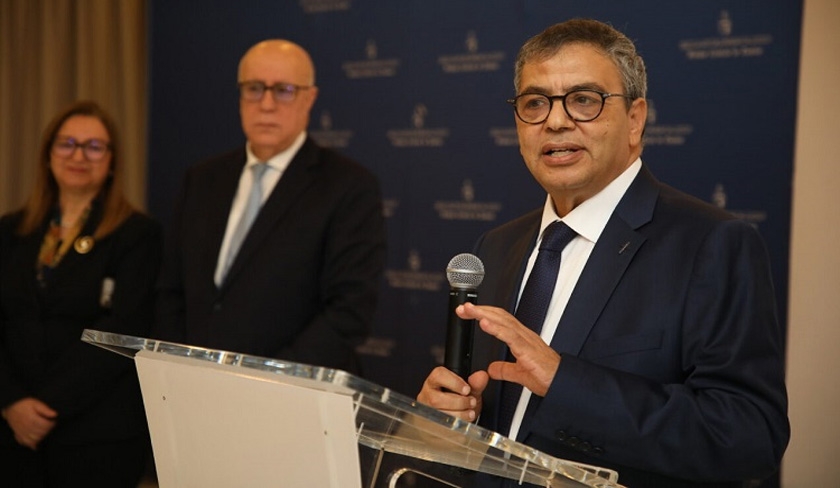Credibility over stimulus defines Tunisia’s macro stance
BCT keeps rates at 7.5% as inflation cools to 5.0%; reserves cover 105 days. TUNINDEX stays near 12,327 while EMB and CL=F track risk appetite, reflecting Tunisia’s strategy to anchor credibility over stimulus in a tightening global cycle.

Tunisia’s central bank has reinforced financial-system resilience by calibrating liquidity while meeting external obligations, a stance that prioritizes credibility and balance-sheet protection over short-term stimulus. The policy rate remains 7.5% after a March 2025 cut, with headline inflation easing to 5.0% in September from 5.2% in August.
Disinflation stems from softer food and transport prices and slower credit, lifting ex-post real rates despite a lower nominal anchor. The operating objective is explicit: compress inflation expectations, preserve external liquidity, and keep rollover conditions orderly as global funding costs remain elevated.
The macro base is weak but stabilizing. Real GDP growth is projected near 1.9% in 2025 after 1.4% in 2024, with agriculture and tourism offsetting sluggish manufacturing. General government debt was 79.8% of GDP in 2024 and is likely to hover around 80–82% in 2025, sensitive to nominal growth and FX. The current account deficit is projected around 2.7% of GDP as a wider goods gap is partly cushioned by tourism receipts and remittances.
Reserves stood near TND 24.6 billion in mid-October, equal to roughly 105 days of imports—slightly below mid-2024’s 107–110 days but above the mid-2025 trough. That mix—low growth, moderating inflation, constrained buffers—forces a narrow policy corridor that favors resilience over demand expansion.
Transmission runs through three mechanisms. First, the interest-rate channel keeps the stance mildly restrictive, anchoring the dinar and curbing FX pass-through. Second, liquidity operations steer interbank conditions without reigniting credit, reducing the risk that lower headline inflation triggers premature easing.
Third, the signaling channel lowers refinancing uncertainty for banks still working through legacy asset-quality stress. Non-performing loans remain elevated in the mid-teens as of 2023, concentrated in tourism and manufacturing. Capital buffers absorb shocks, but net interest margins and liquidity are sensitive to sovereign funding needs, arguing for targeted central-bank support rather than broad accommodation.
Fiscal arithmetic is the binding constraint. The overall deficit likely sits in the mid-5% of GDP range in 2025 as subsidies and wages cap consolidation speed. That raises the share of domestic financing when banks already carry sizeable sovereign holdings, heightening crowding-out risk for private credit and extending duration risk on bank balance sheets.
Timely external debt service reduces the probability of a payments incident and a disorderly depreciation, but it tightens domestic liquidity unless offset by stronger deposit growth, concessional lines, or conditional refinancing windows tied to prudential metrics. The policy mix therefore compresses near-term growth while buying credibility that can lower future risk premia.
Markets price the pivot cautiously. The equity benchmark TUNINDEX traded near 12,327 on 16 October 2025 and was broadly flat over one month, led by banks benefiting from stable liquidity access. The performance is credibility-driven rather than earnings-led; profit growth trails nominal GDP and real funding costs remain high. In credit, Tunisia’s risk premium versus high-yield EM remains wide, reflecting domestic financing dependence and uncertain external anchors.
Durable compression requires two quantifiable markers: a fiscal path narrowing the deficit below 4.5% of GDP within six quarters and reserve cover at or above 110 import days to reassure investors on near-term serviceability. Oil dynamics are an additional swing factor; sustained declines in crude futures (CL=F) would improve the trade balance and reduce FX pass-through risk.
Global context sharpens the signal. Tunisia’s disinflation path is closer to Morocco’s orthodox glide than to Egypt’s FX-reform shock, yet Tunisia lacks Morocco’s market depth and ratings cushion. The approach—monetary orthodoxy, gradual fiscal consolidation, selective bank support—matches the playbook that compressed spreads across several frontier issuers in prior cycles when reserves rose and inflation fell.
If disinflation persists and reserves accumulate, the policy rate can be lowered without destabilizing the dinar, cutting the sovereign’s domestic interest bill and easing bank duration risk. That in turn can unlock a measured recovery in credit to tradables, improving the current account’s non-price component and stabilizing growth.
The forward test is time-anchored and measurable. By Q2-2026, confirm success if headline inflation sustains at or below 6%, reserve cover holds at or above 110 days, the fiscal deficit narrows toward 4–4.5% of GDP, and TUNINDEX advances on earnings rather than multiple expansion. Failure to meet these thresholds would imply tighter domestic funding, wider external risk premia as proxied by EM credit ETFs like EMB, and a renewed shift to pro-cyclical tightening. The central bank has secured the window; fiscal execution and external inflows must close it.





